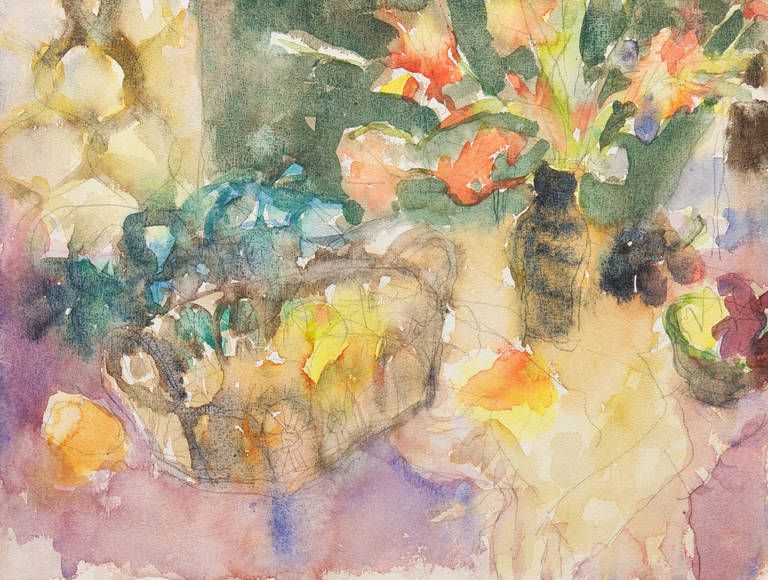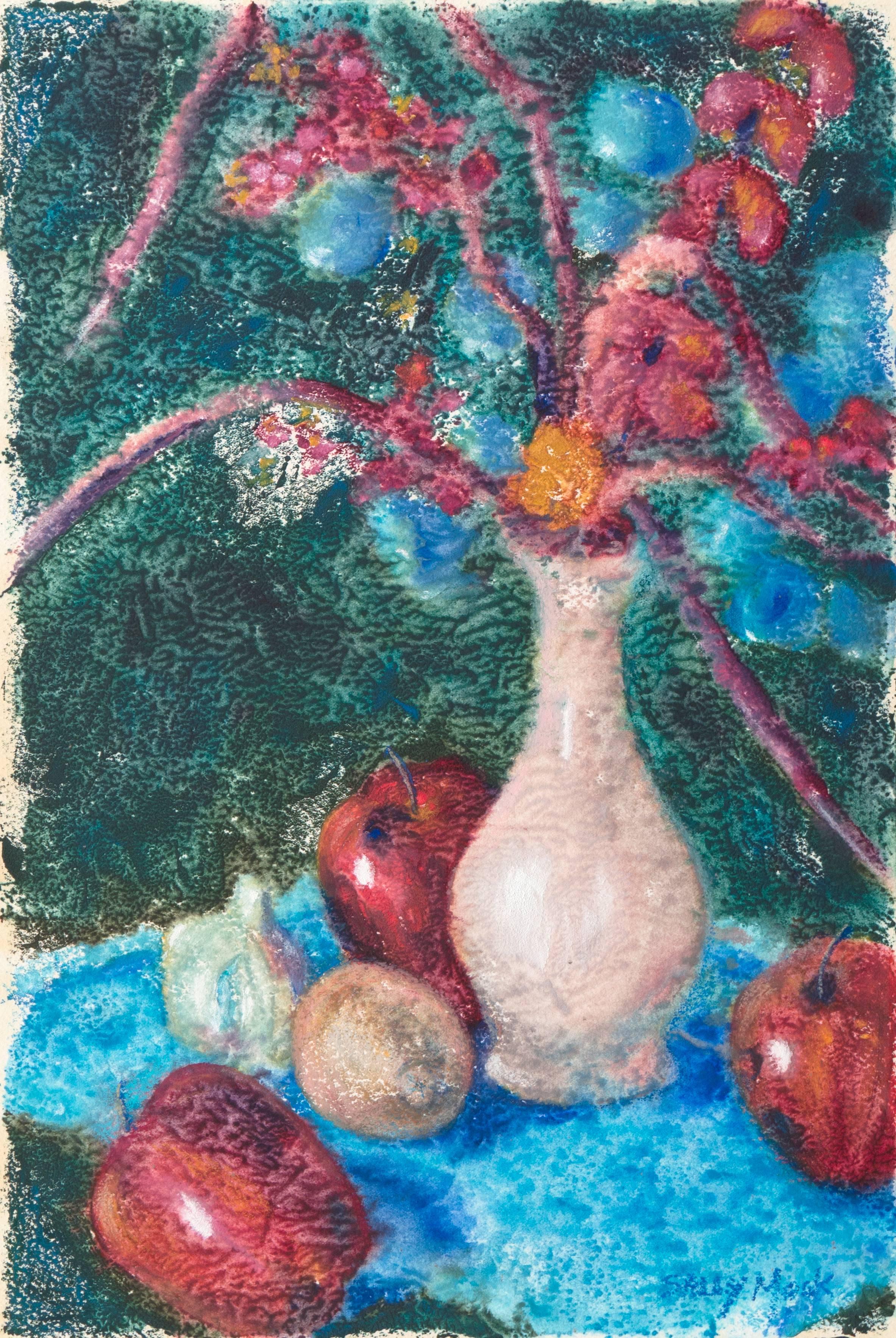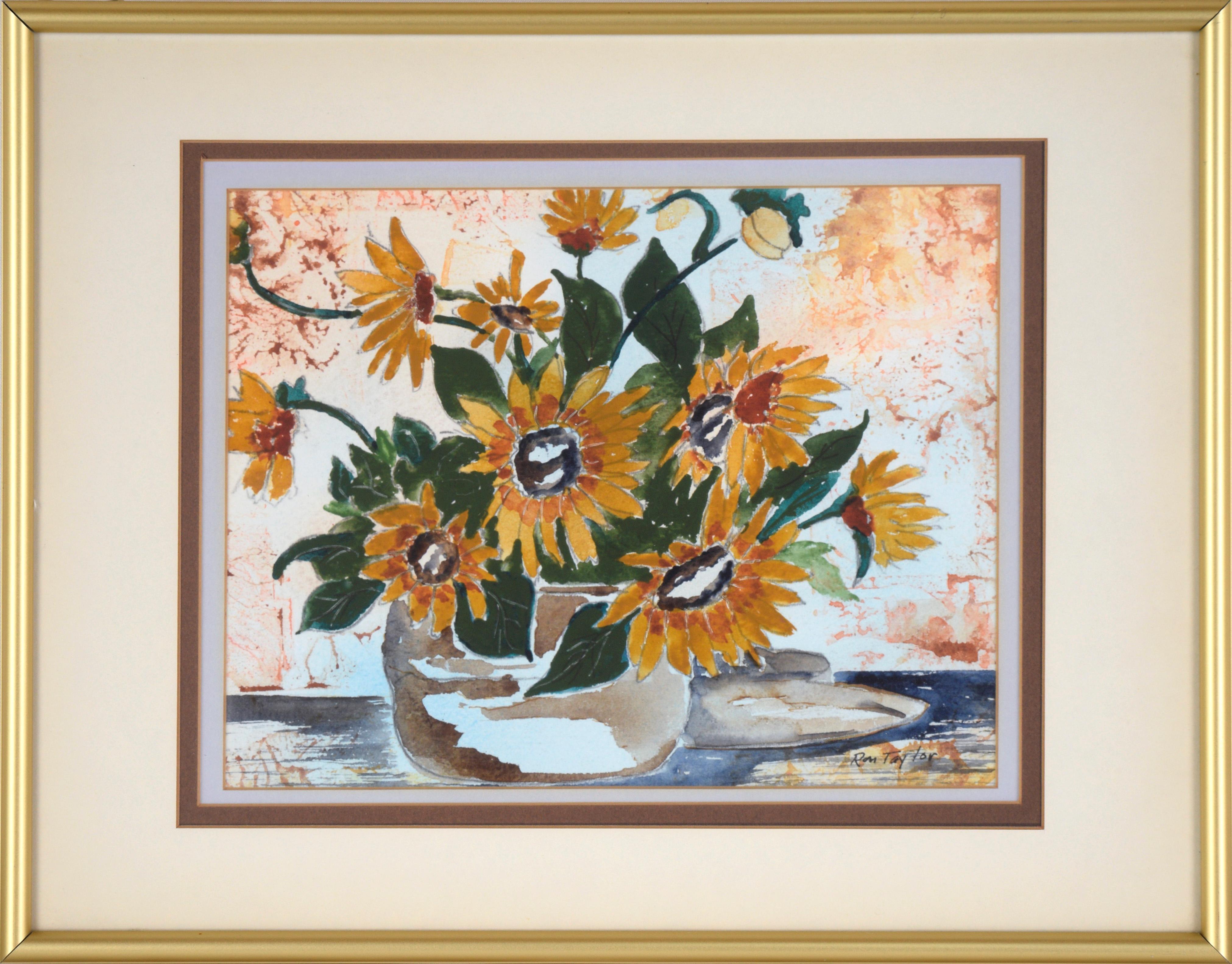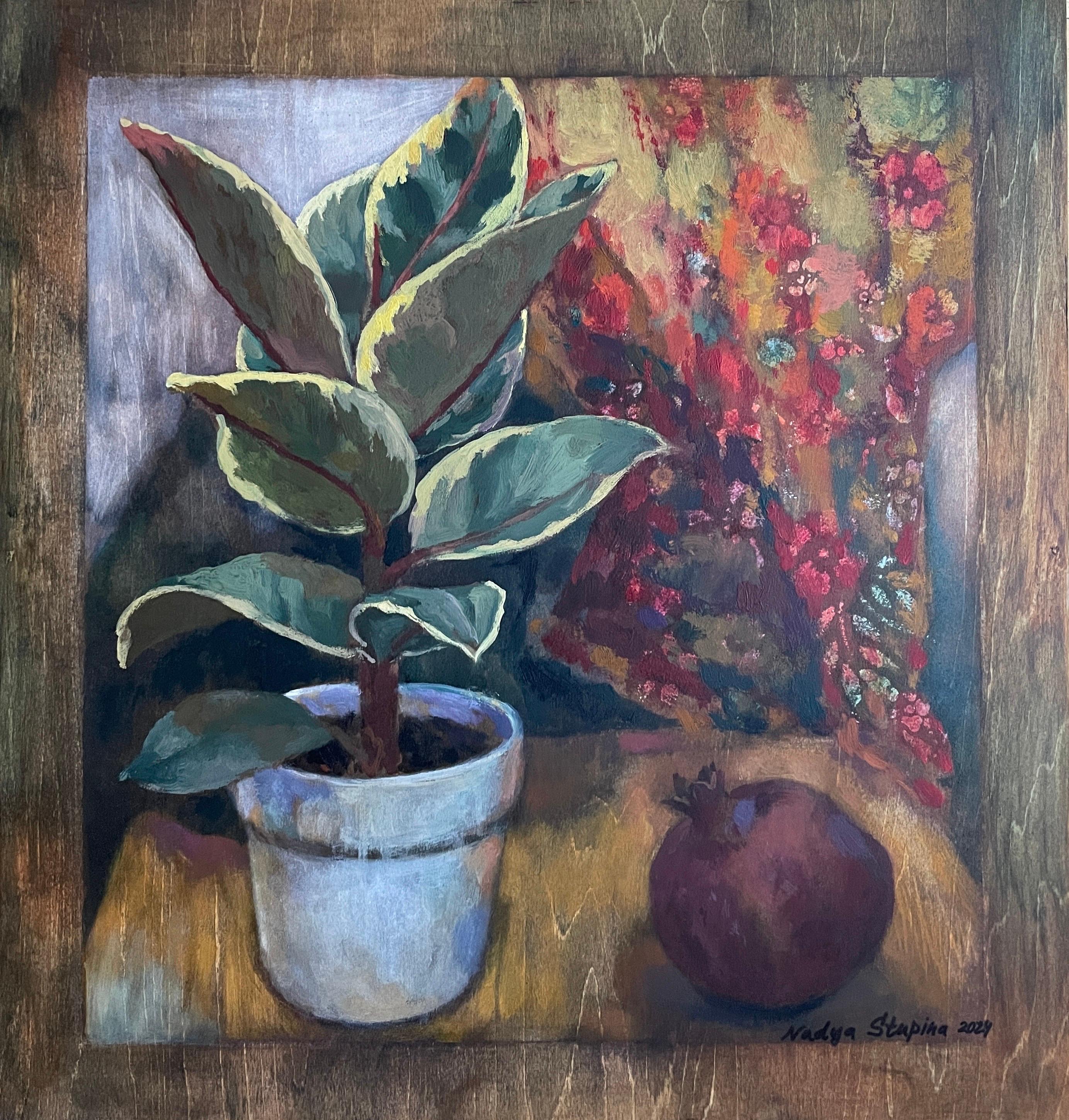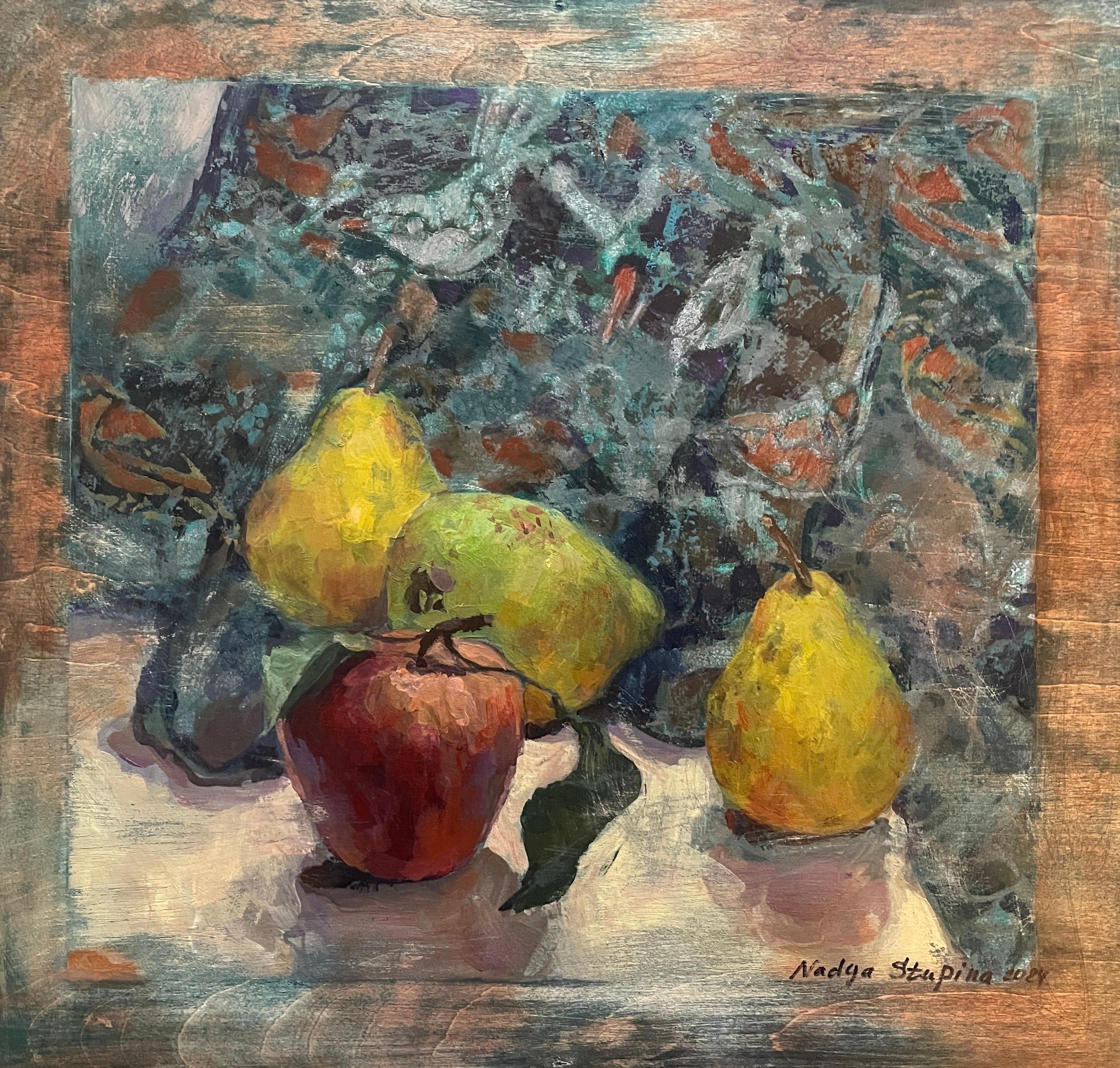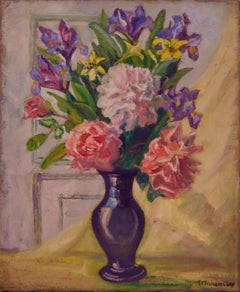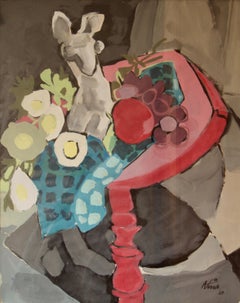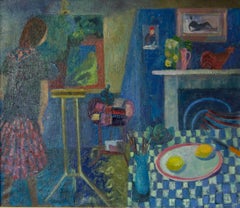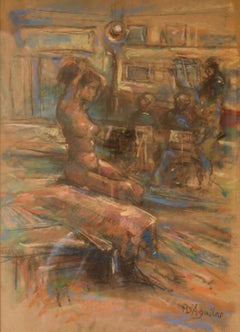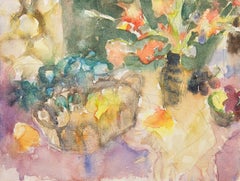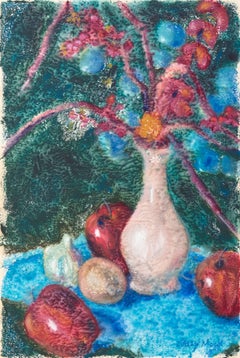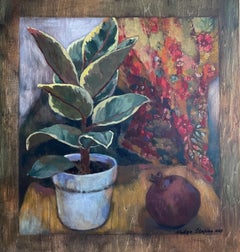Items Similar to Flowers - Mid 20th Century Watercolour by Arthur Wilson Gay - British Still Life
Want more images or videos?
Request additional images or videos from the seller
1 of 7
Arthur Wilson GayFlowers - Mid 20th Century Watercolour by Arthur Wilson Gay - British Still LifeCirca 1950
Circa 1950
About the Item
Arthur Wilson Gay 1901–1958
Artist and portrait painter of whose early training nothing is as yet known. Gay was elected a member of the Bristol Savages in 1928 and for more than thirty years worked at the studios of E. S. & A.
Known for "Conchie" which is displayed in the Bradford Peace Museum.
This piece was created with watercolour and is in a circle frame under glass.
Keywords: Flowers Mid 20th Century Watercolor, British Still Life, daffodil, freesias, vase, circle, circular, round, impressionism, impressionist.
- Creator:Arthur Wilson Gay (1901 - 1958)
- Creation Year:Circa 1950
- Dimensions:Height: 16.62 in (42.2 cm)Diameter: 16.62 in (42.2 cm)
- Medium:
- Movement & Style:
- Period:
- Condition:
- Gallery Location:Watford, GB
- Reference Number:Seller: 2511stDibs: LU563113450282
About the Seller
4.9
Vetted Professional Seller
Every seller passes strict standards for authenticity and reliability
Established in 1980
1stDibs seller since 2017
83 sales on 1stDibs
- ShippingRetrieving quote...Shipping from: Mill Hill, United Kingdom
- Return Policy
Authenticity Guarantee
In the unlikely event there’s an issue with an item’s authenticity, contact us within 1 year for a full refund. DetailsMoney-Back Guarantee
If your item is not as described, is damaged in transit, or does not arrive, contact us within 7 days for a full refund. Details24-Hour Cancellation
You have a 24-hour grace period in which to reconsider your purchase, with no questions asked.Vetted Professional Sellers
Our world-class sellers must adhere to strict standards for service and quality, maintaining the integrity of our listings.Price-Match Guarantee
If you find that a seller listed the same item for a lower price elsewhere, we’ll match it.Trusted Global Delivery
Our best-in-class carrier network provides specialized shipping options worldwide, including custom delivery.More From This Seller
View AllStill Life Flowers - Early 20th Century Oil on Canvas by E C Fisher Clay
Located in Watford, Hertfordshire
Elizabeth Campbell Fisher Clay (1871-1959) was an American artist and printmaker who studied art in Boston, New York, and Paris. After h...
Category
Early 20th Century Post-Impressionist Still-life Paintings
Materials
Canvas, Oil
Abstract Still Life of Vase Fruit on Table Watercolour - Late 1960s by Nina
Located in Watford, Hertfordshire
Nina - 1969
Watercolour in a wooden frame under glass
Keywords: abstract, vase, table, tablecloth, still life, fruit, apple, watercolor, red, animal, eggs, blue, flowers.
Category
1960s Abstract Abstract Paintings
Materials
Watercolor
$867 Sale Price
20% Off
Painting in the Kitchen - Late 20th Century Oil of Artist Working by Ruth Burden
By Ruth Burden
Located in Watford, Hertfordshire
Ruth Burden’s (1925 - 1911) work captures the essence of her subject matter in a bold yet slightly quirky style. Her subjects were the things most familiar to her – people, places an...
Category
1990s Impressionist Figurative Paintings
Materials
Canvas, Oil
Dans L'Atelier Mardi - Mid 20th Century Nude Still Life Oil by Michael D'Aguilar
By Michael D'Aguilar
Located in Watford, Hertfordshire
Baron Michael D`Aguilar was born on May 15, 1922 in London to Spanish parents. He was brother of the artist Paul D`Aguilar. He spent much of his early life in Spain. He studied at...
Category
1940s Impressionist Nude Paintings
Materials
Oil
Impressionist Piece of Flowers & Fruit - Pastel by Olwen Tarrant
By Olwen Tarrant
Located in Watford, Hertfordshire
OLWEN TARRANT won her first prize while still at Art College in London. The judge was Sir Charles Wheeler, former President of the Royal Academy, who prophesied a successful career ...
Category
20th Century Impressionist Still-life Paintings
Materials
Pastel
Girls by the Sea - Mid 20th Century Nude Still Life Oil by Michael D'Aguilar
By Michael D'Aguilar
Located in Watford, Hertfordshire
Baron Michael D`Aguilar was born on May 15, 1922 in London to Spanish parents. He was brother of the artist Paul D`Aguilar. He spent much of his early life in Spain. He studied at...
Category
1950s Impressionist Nude Paintings
Materials
Oil Pastel
You May Also Like
'Still Life', Louvre, California Post-Impressionist, LACMA, Académie Chaumière
By Victor Di Gesu
Located in Santa Cruz, CA
Estate stamp, verso, for Victor di Gesu (American, 1914-1988) and painted circa 1955.
Winner of the Prix Othon Friesz, Victor di Gesu first attended the Los Angeles Art Center and t...
Category
1950s Post-Impressionist Still-life Paintings
Materials
Watercolor, Laid Paper, Graphite
'Apples and Cherry Blossoms', Modernist Still Life
By Sally Mack
Located in Santa Cruz, CA
Signed lower right "Sally Mack" (American, 20th century) and painted circa 1975. Painted on Arches paper.
A vibrant, Post-Impressionist still-life showing branches of cherry-blossom...
Category
1970s Post-Impressionist Still-life Paintings
Materials
Gouache, Paper
Sunflower Still Life - Watercolor and Ink on Paper
Located in Soquel, CA
Sunflower Still Life - Watercolor and Ink on Paper
Original watercolor and ink painting depicting sunflowers by Ron Taylor (American, 20th C). A short vase full of sunflowers is sit...
Category
20th Century Pointillist Still-life Paintings
Materials
Paper, Ink, Watercolor
Still life with pomegranate
Located in Oslo, NO
This captivating artwork features a vivid still life composition dominated by a potted plant with lush, broad leaves, prominently positioned in the foreground. The plant's leaves exh...
Category
2010s Post-Impressionist Still-life Paintings
Materials
Wood, Gouache
Pears and apple
Located in Oslo, NO
This artwork is a masterful still life composition that captivates through its rich textures and vibrant color palette. Dominating the foreground are three prominently placed fruits:...
Category
2010s Post-Impressionist Still-life Paintings
Materials
Wood, Gouache
Projet de Tissus - Fauvist Flowers Watercolor & Gouache by Raoul Dufy
By Raoul Dufy
Located in Marlow, Buckinghamshire
Botanical watercolour and gouache on paper circa 1920 by French fauvist painter Raoul Dufy. The work depicts flowers in red, blue and green. This work was executed by Dufy as a fabric design.
Dimensions:
Framed: 19.5"x19.5"
Unframed: 12"x12"
Provenance:
Private collection of works by Raoul Dufy for Bianchini Ferier
Bianchini Ferrier Collection - Christie's London - July 2001
SF Fall Show
Raoul Dufy was one of a family of nine children, including five sisters and a younger brother, Jean Dufy, also destined to become a painter. Their father was an accountant in the employ of a major company in Le Havre. The Dufy family was musically gifted: his father was an organist, as was his brother Léon, and his youngest brother Gaston was an accomplished flautist who later worked as a music critic in Paris. Raoul Dufy's studies were interrupted at the age of 14, when he had to contribute to the family income. He took a job with an importer of Brazilian coffee, but still found time from 1892 to attend evening courses in drawing and composition at the local college of fine arts under Charles Marie Lhullier, former teacher of Othon Friesz and Georges Braque. He spent his free time in museums, admiring the paintings of Eugène Boudin in Le Havre and The Justice of Trajan in Rouen. A municipal scholarship enabled him to leave for Paris in 1900, where he lodged initially with Othon Friesz. He was accepted by the École des Beaux-Arts, where he studied under Léon Bonnat, whose innate conservatism prompted Dufy to remark later that it was 'good to be at the Beaux-Arts providing one knew one could leave'.
And leave he did, four years later, embarking with friends and fellow students on the rounds of the major Paris galleries - Ambroise Vollard, Durand-Ruel, Eugène Blot and Berheim-Jeune. For Dufy and his contemporaries, Impressionism represented a rejection of sterile academism in favour of the open-air canvases of Manet, the light and bright colours of the Impressionists, and, beyond them, the daringly innovative work of Gauguin and Van Gogh, Seurat, Cézanne, Toulouse-Lautrec and others. Dufy was an out-and-out individualist, however, and was not tempted to imitate any of these artists. He produced, between 1935 and 1937, Fée Electricité (Spirit of Electricity), the emblem for the French utilities company Electricité de France (EDF).
Dufy visited the USA for the first time in 1937, as a member of the Carnegie Prize jury. In 1940, the outbreak of war (and his increasingly rheumatic condition) persuaded him to settle in Nice. When he eventually returned to Paris 10 years later, his rheumatism had become so debilitating that he immediately left for Boston to follow a course of pioneering anti-cortisone treatment. He continued working, however, spending time first in Harvard and then in New York City before moving to the drier climate of Tucson, Arizona. The cortisone treatment was by and large unsuccessful, although he did recover the use of his fingers. He returned to Paris in 1951 and decided to settle in Forcalquier, where the climate was more clement. Within a short time, however, he was wheelchair-bound. He died in Forcalquier in March 1953 and was buried in Cimiez.
Between 1895 and 1898, Raoul Dufy painted watercolours of landscapes near his native Le Havre and around Honfleur and Falaise. By the turn of the century, however, he was already painting certain subjects that were to become hallmarks of his work - flag-decked Parisian cityscapes, Normandy beaches teeming with visitors, regattas and the like, including one of his better-known early works, Landing Stage at Ste-Adresse. By 1905-1906 Friesz, Braque, Matisse, Derain, Vlaminck, Van Dongen and Rouault were described collectively as Fauves (the wild beasts). What they had in common was a desire to innovate, but they felt constrained nonetheless to meet formally to set out the guiding principles of what promised to be a new 'movement'. Dufy quickly established that those principles were acceptable; moreover, he was most impressed by one particular painting by Henri Matisse ( Luxury, Calm and Voluptuousness) which, to Dufy, embodied both novelty and a sense of artistic freedom. Dufy promptly aligned himself with the Fauves. Together with Albert Marquet in particular, he spent his time travelling the Normandy coast and painting views similar...
Category
1920s Fauvist Still-life Drawings and Watercolors
Materials
Paper, Watercolor, Gouache
